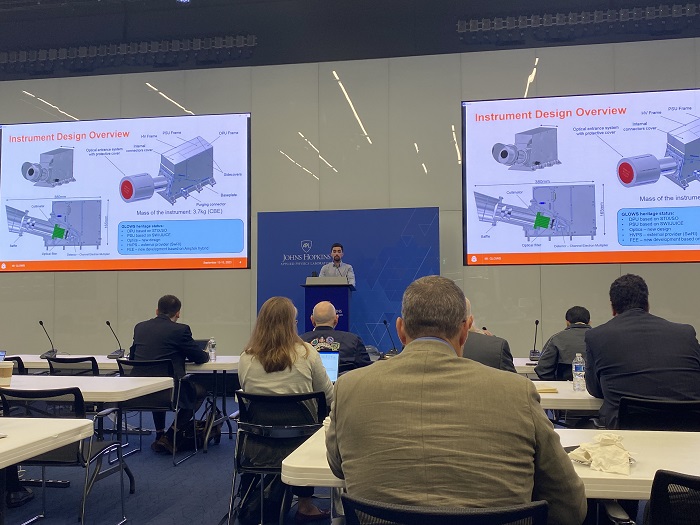
The NASA heliospheric mission Interstellar Mapping and Acceleration Probe (IMAP) has passed the system integration review for all 10 instruments of the satellite, including the GLOWS instrument built by the Space Research Centre of the Polish Academy of Sciences.
According to the Space Research Centre PAS spokesperson, a meeting of the IMAP team in held mid-September was combined with a review panel to assess the integration plan of all subsystems, including scientific instrumentation, electrical and communication systems, and navigation systems.
Successful completion of this review means that spacecraft assembly and testing can begin in preparation for launch, scheduled for 2025.
According to the team led by Professor David McComas from Princeton University, the process of building such a complicated probe resembles a carefully choreographed dance. First, the instruments and support systems are delivered to various facilities, then they are tested together in thermal-vacuum chambers in several American laboratories, before being sent back for integration and re-testing.
On Friday, Sept. 15, 2023, the chair of the Standing Review Board announced that the IMAP project successfully passed the SIR requirements to proceed to integration and further test.
'I am incredibly proud of the entire IMAP team for everyone's hard work and determination in getting us to and through this critical milestone,’ says David McComas, IMAP mission principal investigator. 'We are now moving on to spacecraft integration and test, where all of the individual subsystems and instruments merge together to create our full IMAP observatory.’

One of the 10 key parts of the probe will be the Polish instrument GLOWS - GLObal solar Wind Structure. It is a photometer developed by scientists and engineers from the Space Research Centre of the Polish Academy of Sciences, which is intended to investigate the global heliolatitude structure of the solar wind and its evolution during the solar cycle. Additionally, GLOWS investigates the distribution of interstellar neutral hydrogen (ISN H) and the solar radiation pressure acting on ISN H.
The representative of the Polish institution at the review was Karol Mostowy, the GLOWS instrument project leader.
'The review consisted of presenting the readiness of individual subsystems for integration with the satellite. This is a key moment in which we show that teams from around the world working on their 'piece of the pie' are ready to combine all the components into one working satellite. The integration itself is about to begin in a few months,’ he says Karol.
He adds that the entire review took three days and was assessed very positively by NASA reviewers. 'The preparation of the GLOWS team for the integration of our instrument with the satellite was assessed positively by reviewers. They had no objections to the work of our team. In the near future, we will start integrating the GLOWS instrument, so that at the beginning of next year we can take it to the Johns Hopkins University Applied Physics Laboratory for integration with the satellite.'
The NASA mission IMAP is scheduled to launch in 2025. Its goal is to study the boundaries of the heliosphere, a kind of electromagnetic 'bubble' surrounding and protecting the Solar System.
More than 20 partner institutions are involved in preparing the mission, including the Space Research Centre of the Polish Academy of Sciences.
A video of the IMAP System Integration Review is available here. (PAP)
PAP - Science in Poland, Katarzyna Czechowicz
kap/ bar/
tr. RL


